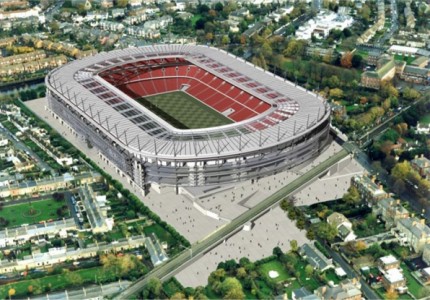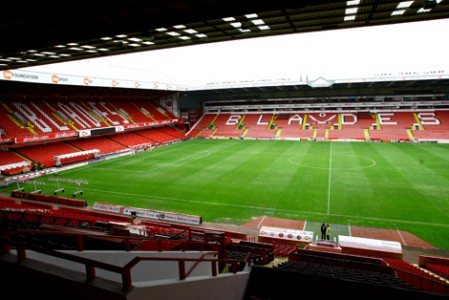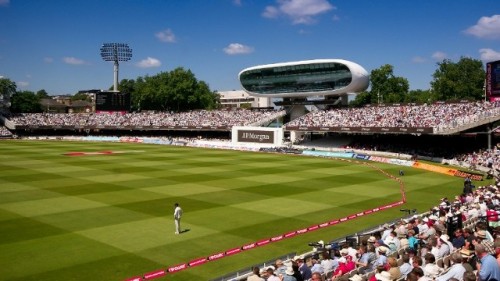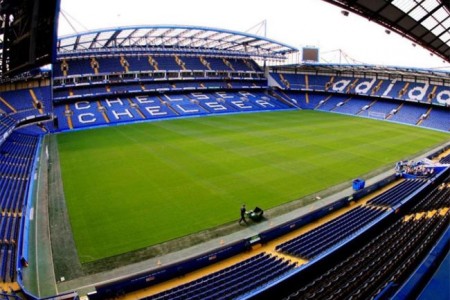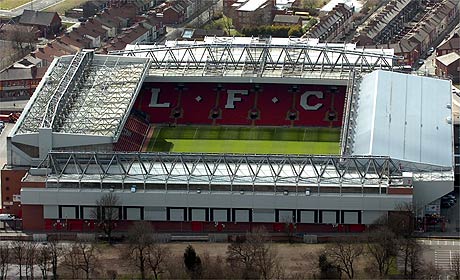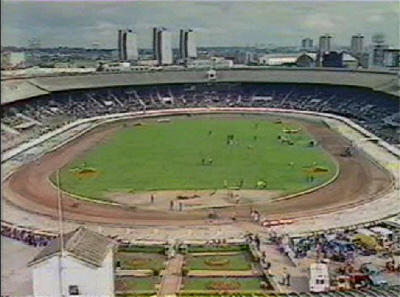1. Bramall Lane Stadium
Bramall Lane stadium is the oldest stadium in the world still to be hosting national and international football matches. This stadium is the home of Sheffield United football club and is located in Sheffield, South Yorkshire, England. Bramall Lane Stadium is the only stadium besides The Oval which has hosted England international football matches, an England cricket test match and a FA Cup Final. The stadium was named after the file and graver manufacturers Bramall family. Besides cricket and football, Bramall Lane Stadium has also hosted rugby league games for the Sheffield Eagles, and a pair of rock concerts in 1988 by Bruce Springsteen. This stadium has a seating capacity of 32,702 and was constructed in 1855.
2. Lord’s Cricket Ground
Lord’s Cricket Ground is widely referred as the “home of cricket” and is the world’s oldest sporting museum. The stadium was named after its founder Thomas Lord and is located in St John’s Wood, London. Marylebone Cricket Club now owns Lord’s Cricket Ground. It is the home ground of Middlesex County Cricket Club, the England and Wales Cricket Board and the European Cricket Council. It was also the home of International Cricket Council until August 2005. The ground recently celebrated its two hundredth anniversary in 2014 where a 50 overs match was organized between Marylebone Cricket Club XI captained by Sachin Tendulkar and Rest of the World XI led by Shane Warne on 5 July, 2014.
3. The Oval Cricket Ground
The Oval Cricket Ground was the first ground to host international Test cricket in England in September 1880. This stadium is often called as the Kia Oval due to commercial sponsorship by KIA Motors. The Oval was established in 1845 and is located in Kennington, in the London Borough of Lambeth, South London. The Oval has been the home ground of Surrey County Cricket Club since it was officially opened. This ground hosted the first England football international in 1870 against Scotland and hosted the first FA Cup final in 1872. The Oval was also the home of the FA Cup finals from 1874 to 1892. The final Test match of the English season is played in the Oval as an old tradition. This stadium has a seating capacity of 23,500.
4. Stamford Bridge Stadium
Stamford Bridge Stadium is often referred simply as The Bridge and is the eighth largest ground in the Premier League. This stadium is located within the Moore Park Estate in Fulham, London and is the home ground of Chelsea F.C. This stadium has a seating capacity of 41,798 and was opened officially for public on 28 April 1877. The stadium has the highest official attendance of 82,905 on 12 October 1935 in a league match between Chelsea and Arsenal. Besides national and international football matches, the stadium also hosted FA Cup Finals, FA Cup semi-finals and Charity Shield games. Before Chelsea F.C. occupied the ground 1905, Stamford Bridge Stadium was also used by the London Athletic Club.
5. Lansdowne Road Stadium
Lansdowne Road Stadium was primarily used for rugby union and for association football matches and was demolished in 2007. This stadium was actually demolished to make ground of the new Aviva Stadium opened in 2010. Lansdowne Road Stadium was located in the neighborhood of Ballsbridge in the city’s Dublin and was owned by the Irish Rugby Football Union. It had a seating capacity of 48,000 and was officially opened for public in 1872. It was the creation of Henry Wallace Doveton Dunlop who was the organizer of the first All-Ireland Athletics Championships and also the founder of Lansdowne Football Club in 1872. Besides hosting active sports, Lansdowne Road Stadium also hosted musical concerts by Michael Jackson, Robbie Williams, U2 and several other music legends.
6. Anfield Stadium
Anfield Stadium is the seventh largest football stadium in England and is located in Anfield, Liverpool, England. It was originally the home of Everton F.C. between 1884 and 1891, and has been the home of Liverpool F.C. since they established in 1892. After Anfield Stadium converted to an all-seater stadium in 1994, it currently has the seating capacity of 45,276. This stadium holds the record of height number of attendance of 61,905 on 2 February 1952 in a match between Liverpool and Wolverhampton Wanderers. This stadium is currently equipped with Desso GrassMaster surface to provide better efficiency during football matches. Liverpool F.C. and Fenway Sports Group are also trying to redevelop Anfield with 58,000 seating capacity.
7. Melbourne Cricket Ground
The Melbourne Cricket Ground is the largest stadium in Australia and the 11th-largest stadium in the world. It also holds the record of being the largest stadium for playing cricket and the largest stadium in the Southern Hemisphere. Melbourne Cricket Ground is located in Yarra Park, Melbourne, Victoria and is a major part in the Melbourne Sports and Entertainment Precinct. This stadium hosted several matches and events of 1956 Summer Olympics, the 1992 ICC Cricket World Cup and the 2006 Commonwealth Games. Melbourne Cricket Ground also hosts popular Boxing Day Test match on 26 December each year. This stadium was established in 1853, and currently has the seating capacity of 100,024.
8. Old Trafford Stadium
The Old Trafford football Stadium is the second-largest football stadium in the United Kingdom. This stadium is located in Greater Manchester, England and is the home ground of Manchester United F.C. It is also the ninth-largest stadium in Europe with its seating capacity of 75,635. Old Trafford hosted several matches of the 1966 FIFA World Cup and UEFA Euro 96 and hosted the final of 2003 Champions League. This stadium hosts Super League Grand Final each year and already twice hosted the final matches of the Rugby League World Cups. Old Trafford was also a main stadium of the 2012 London Olympics. This stadium was constructed by legendary Architect Archibald Leitch and officially opened on 19 February 1910.
9. South End Grounds
South End Grounds were a group of three baseball stadiums in Boston, Massachusetts. This stadium used to be the home ground of the American baseball club Boston Braves in the National League and the National Association between 1871 and 1914. Due to its design similarity with Polo Grounds, it was often said that the south end Ground only had a center field but didn’t have right or left field. It was opened on May 16, 1871 for the first time, and the last game was played on September 10, 1887. It was demolished and then reopened on May 25, 1888, and later destroyed in the Great Roxbury Fire of May 15, 1894. It was reopened for the final time on July 20, 1894 after reconstruction. It used to have a capacity of 6,800 and had a grass surface.
10. White City Stadium
White City Stadium is widely regarded as the precursor to the modern seater stadium. It was mainly built for the 1908 Summer Olympics but also hosted a match at the 1966 FIFA World Cup. This stadium used to host the greyhound racing and speedway. White City Stadium was the host of the finish for the first ever modern distance marathon and is the first Olympic Stadium in the United Kingdom. White City Stadium was designed by engineer J. J. Webster and constructed by George Wimpey with a seating capacity of 68,000. This stadium was opened for public on 27 April 1908 by King Edward VII. It was also the home ground of the White City Rebels speedway team from 1976 to 1978. After its demolition in 1985, the site is now the BBC White City.
There are several other stadiums like Filbert Street built in 1891 and Roker Park established in 1897 which were demolished, but still have the same impact for the audiences and fans attached with them. There will be many more stadiums still to come with state of the art technology and modern infrastructures, but the heritage stadiums will remain the heritage and defining points of history.
